Are you curious about when cats stop growing? If you’re a new cat owner or just interested in how cats grow, knowing their growth stages is key. This knowledge ensures you give the best care to your pet.
Most cats stop growing once they hit 1 year. But some, like the bigger Maine Coons, might keep growing until 2 years. It’s interesting that male cats generally grow slower and stop later than females. Females reach maturity faster and don’t go into heat after maturing. Cats also develop in behavior and social skills, not just size. By age 2, they’re more mature in their social and behavioral aspects.
Key Takeaways:
- Cats usually stop growing around 1 year old, though some continue until 2.
- Male cats often grow slower and stop growing later than females.
- Female cats mature earlier and stop going into heat once mature.
- Cats grow in size and in behavioral and social maturity.
- By 2 years old, cats reach full maturity in behavior and social skills.
Factors Affecting Cat Growth
Several things can impact how a cat grows. Genetics are a big part of a cat’s size. They get genes from their parents, which help determine their growth. Male cats are usually bigger than females because of their hormones and genes.
It’s important for cats to eat right for good growth. A balanced diet filled with proteins, vitamins, and minerals is key. Talk to a vet to make sure your cat is getting what they need.
Cats can reproduce before they’re fully grown. They can be ready for this between 4 and 12 months old. When they reach this stage, growth may slow down as their body focuses on reproduction.
The number of kittens in a litter matters too. So does how they’re cared for when they’re little. Kittens from big litters might not get enough food or attention. But those who are well-fed and cared for early on have a better chance to grow fully.
To help your cat grow well, give them quality food, take them to the vet regularly, and make sure they have a safe, fun place to live. For more on cat growth, see the table below:
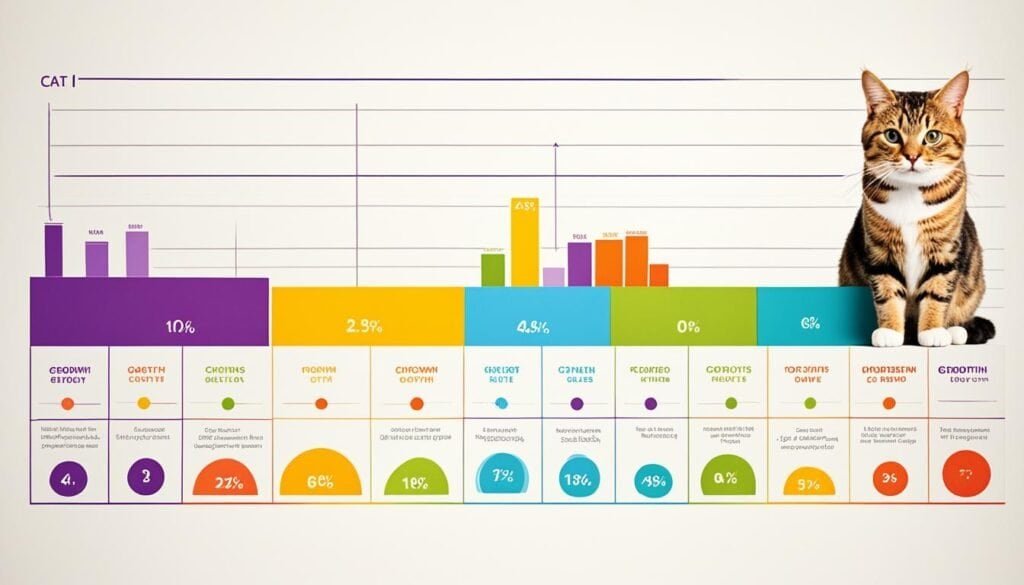
Factors Affecting Cat Growth
| Factors | Description |
|---|---|
| Genetics | Genes from parents influence a cat’s size. |
| Sex | Male cats usually grow larger than females. |
| Nutrition and Diet | Healthy eating is crucial for a cat’s development. |
| Sexual Maturity | Growth can slow when cats reach breeding age. |
| Litter Size | Being in a big litter might limit growth chances for kittens. |
When Do Kittens Reach Full Size?
It’s fun to watch a kitten grow. You might wonder when your cute kitten will be fully grown. Most kittens are full-sized by 12 months old, but this can change with breed and individual factors.
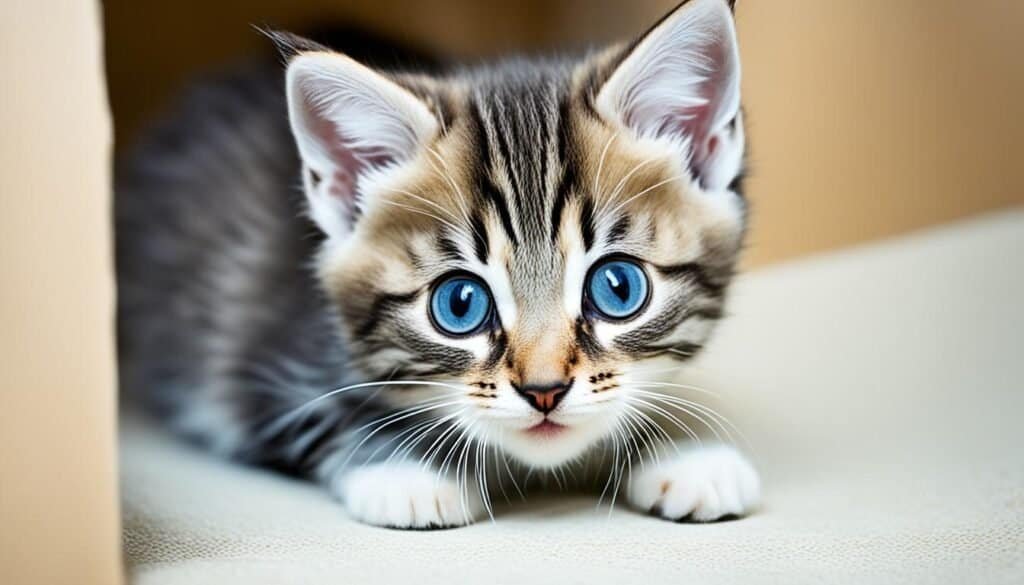
Take the Maine Coon cat, for example. They grow more slowly and might not be fully grown until 3 to 5 years old. These large cats grow at their own pace, experiencing several growth spurts.
Kittens hit many milestones early on. They open their eyes in the first two weeks. Then, they start teething at about 3 to 4 weeks old. By 6 months, most reach sexual maturity.
Feeding your kitten right and watching its growth is crucial. If you’re worried about how your kitten is growing, talk to a vet.
How Big Is the Average Cat?
Cats come in different sizes based on breed, sex, and genetics. Typically, they weigh 6 to 12 pounds. They are usually 13 to 40 inches long from nose to tail. Generally, male cats are bigger than female cats.
An average cat’s weight runs from 6 to 12 pounds. This can change with breed and genetics. For example, Maine Coons are often heavier.
Most cats are 13 to 40 inches long, measuring from nose to tail tip. This length varies by breed. Cats with longer tails, like the Japanese Bobtail, may be longer.
These numbers are averages, but there are exceptions. Some cats can be smaller or larger than this range. Also, male cats usually tend to be larger than females.
Knowing the average size of a cat helps. It’s useful for those looking to adopt or to watch their cat grow.
Here is an image that shows different cat sizes:
Can I Tell How Big My Kitten Will Get?
It’s tricky to say exactly how big a cat will grow. But, some clues can help us guess. Things like the cat’s breed, if it’s a boy or girl, its bone growth, and even how many brothers and sisters it has affect its size.
Cat breeds matter when guessing their future size. For instance, Maine Coons usually get pretty big, while Siamese cats stay on the smaller side.
Whether a cat is male or female also plays a part in how big it will get. Boys generally grow larger than girls. But, this can change based on the type of cat. Girls often stop growing sooner because they mature earlier.
A cat’s bones also tell us about its final size. Cats grow until their bones fully mature. So, if a kitten’s bones are still developing, it can still get bigger.
Looking at a cat’s family can also give hints about its size. A kitten might end up being the size of its parents. But, genetics can be tricky. Even kittens from the same family can end up different sizes.
What a cat eats is super important for its growth. A healthy diet with the right nutrients is key for growing big and strong. This helps bones and muscles develop properly.
The number of kittens in a family can influence size too. Kittens from bigger families might not grow as quickly. This is because they might not get as much food. But, with the right care and food, a kitten can reach its full size.
Conclusion
Cats usually stop growing when they are about 1 year old. Yet, some breeds like the Maine Coon, might keep growing until 2 years old. Their growth rate and final size can be affected by breed, genetics, nutrition, and sex. It’s important for cat owners to take their pets for regular vet check-ups. This helps track the cat’s growth and health.
Every cat is different, with some showing big size differences even within the same breed. It’s hard to predict a cat’s final size due to many factors. Still, proper care, food, and regular vet visits can help cats grow well.
Knowing how cats grow and what affects their growth is crucial for their well-being. By creating a caring environment, cat owners can help their cats thrive. This leads to a healthy and joyful life for their pets.
FAQ
When do cats stop growing?
What factors affect cat growth?
When do kittens reach full size?
How big is the average cat?
Can I tell how big my kitten will get?
Conclusion
Last modified: April 10, 2024

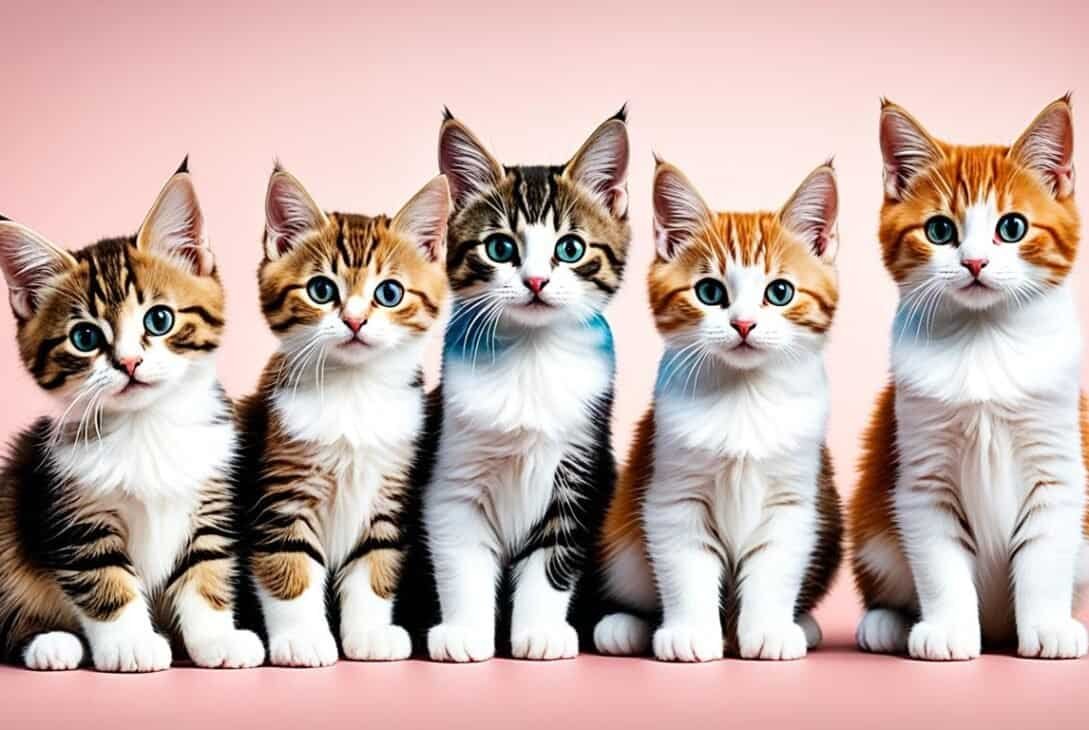
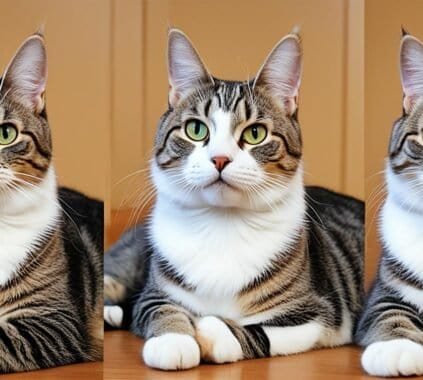
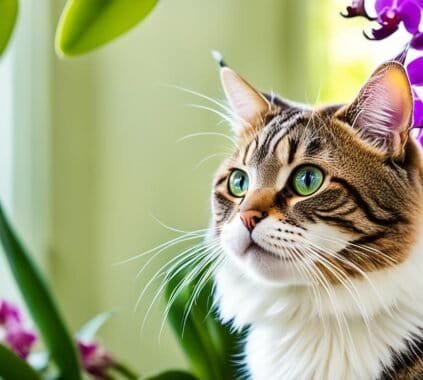
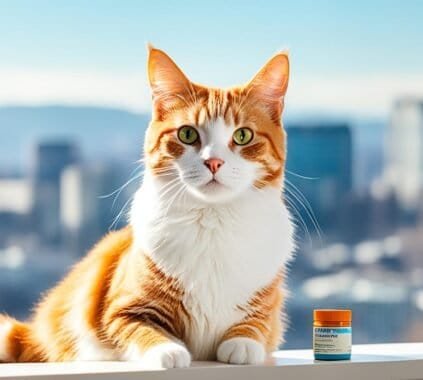









[…] cat’s age also influences the cost. Younger cats need more care, which can raise the price. Older cats might […]